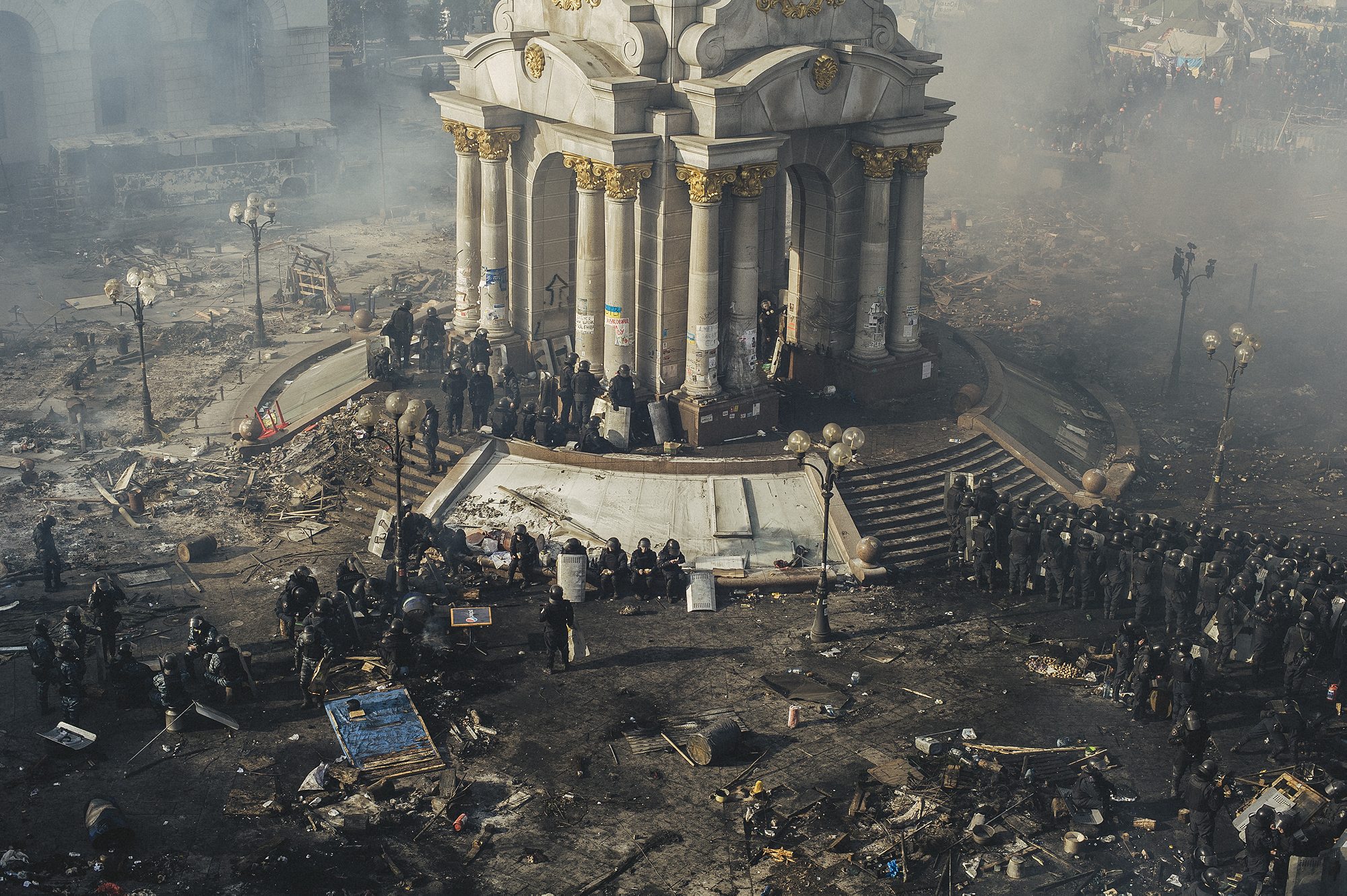In the summer of 2013, months before Euromaidan started, photographer Maxim Dondyuk had traded his camera for video equipment. He was in Crimea, trying his hand at documentary filmmaking, when 2,000 protesters peacefully gathered in Kiev’s main square after the government decided to suspend its process of integration into the European Union. He watched as the protests intensified and, on November 30th, as the authorities started cracking down. The next day, he was at Maidan. “Euromaidan became one of the most visually beautiful revolutions,” Dondyuk wrote after spending three months in the square. The photos he came back with are incredibly cinematic, like scenes from a Hollywood film, and show another side to a widely-documented event. Now he’s making a book, in which aesthetics and emotions take the lead.
Roads & Kingdoms: When did you first visit Maidan?
Maxim Dondyuk: Everything happened in the city I live in. The first mass assembly was on December 1st 2013, and it included people from all walks of life. I took a photo from the subway where you can see how crowded it was. The two blocks around Maidan were absolutely packed. People were coming from the entire country, not only to support European integration, but to protest against the impunity of those who beat up students there a few days earlier. People were coming out to defend civil rights. That was my first day at Maidan and I couldn’t have imagined were it would be leading me. That day, the authorities made a mistake: on Bankova street, right near the office of the President, demonstrators and journalists were beaten up. That same day, demonstrators started occupying City Hall and barricades started going up. Despite that, I was sure that by the morning the police would have cleared the entire place. I didn’t have the slightest idea that I would spend the next three months there.

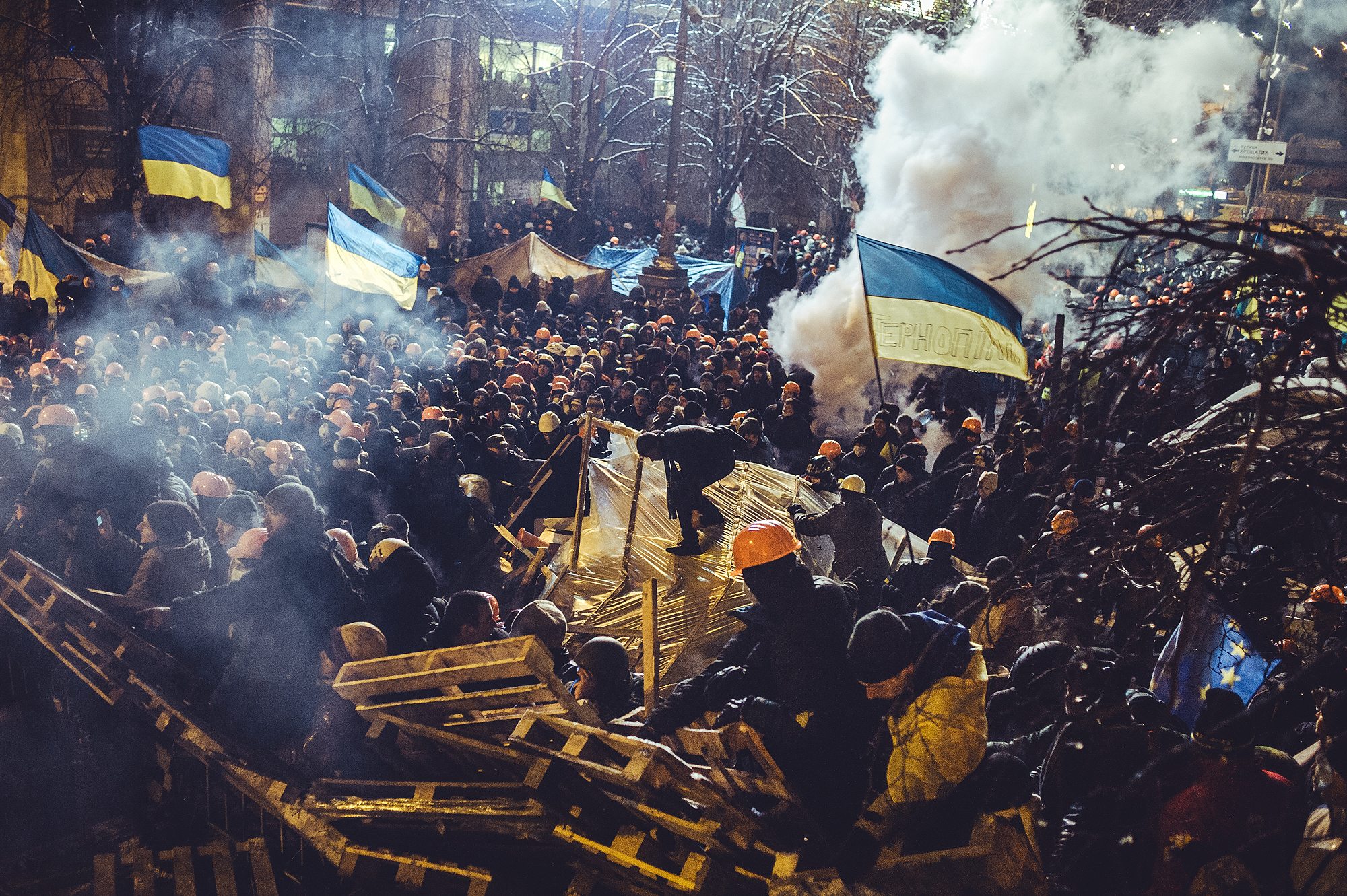
R&K: At what point did you decide this project would be something different than a photojournalistic reportage?
Dondyuk: During the first few weeks of December, before the first attempt to clear the square, I didn’t know what I wanted to photograph and in what way. There were hundreds of journalists in Kiev. Sometimes you would see 20 people with cameras standing in a single square meter. It was very difficult to photograph in such conditions, especially as I do not cover news. The more time I spent at Maidan, the more I realized that my subconscious distorted reality. I found myself in front of battle scenes that reminded me of what I had seen in museums, in Realist paintings. It became important to interpret what I saw and felt rather than answer the questions what? where? when? I decided to document Euromaidan through emotions and visual language.
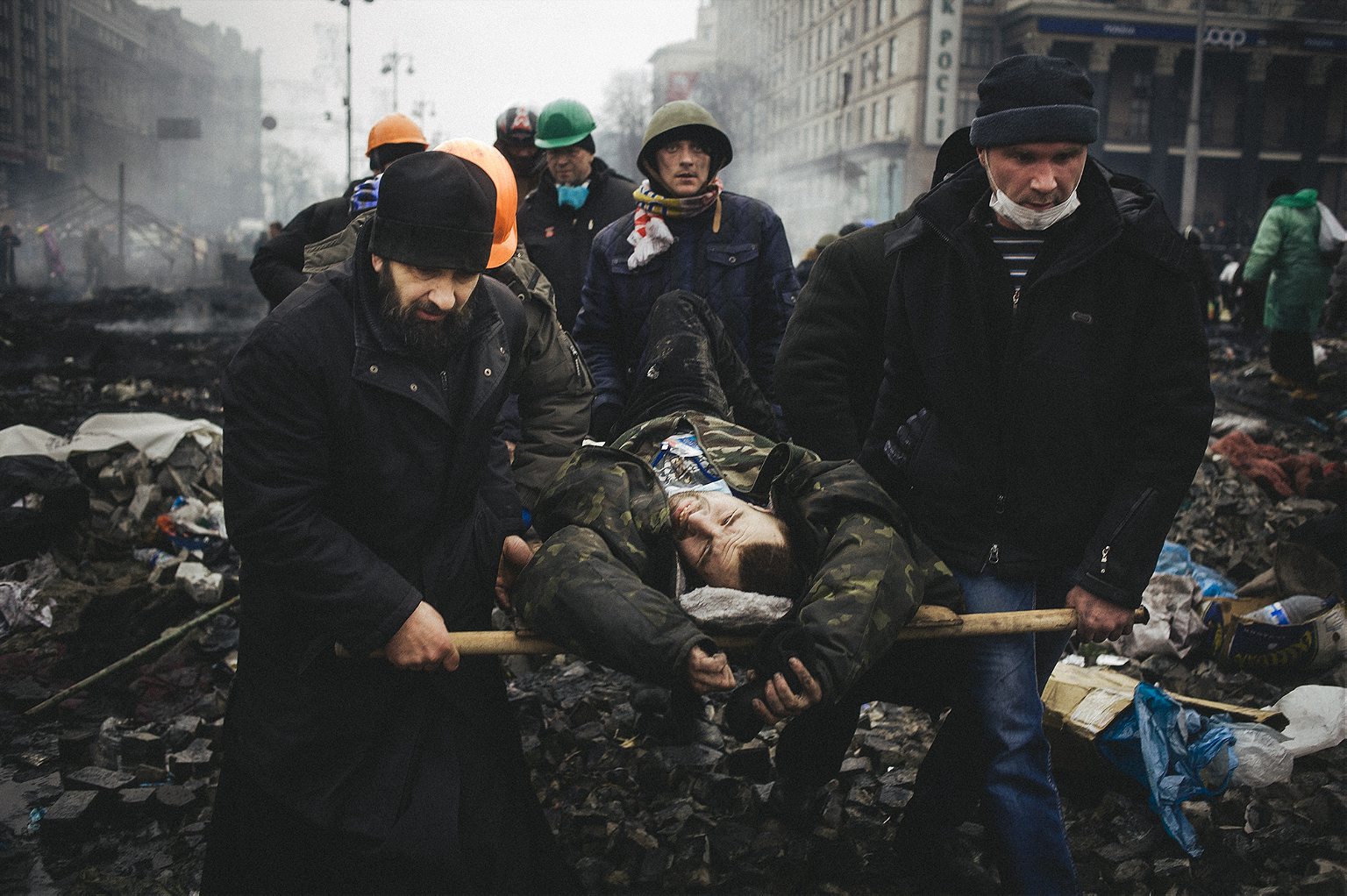
R&K: How did you achieve that way of photographing?
Dondyuk: As soon as I stopped trying to control my subconscious, I stopped following the rules imposed on me, and gave myself complete freedom. I was transported in a different reality, far from the demonstrations in Kiev. In front of me, I saw scenes that were both beautiful and horrible. My camera became my notebook, my visual diary.
R&K: Did you feel like your role changed at that moment?
Dondyuk: I was at Maidan from the 1st of December to the end. It was a very tragic period for my country. But I was happy that I could be present at this historic moment to convey what I saw to future generations and to people from different countries. Being a documentary photographer, I think it was my duty.
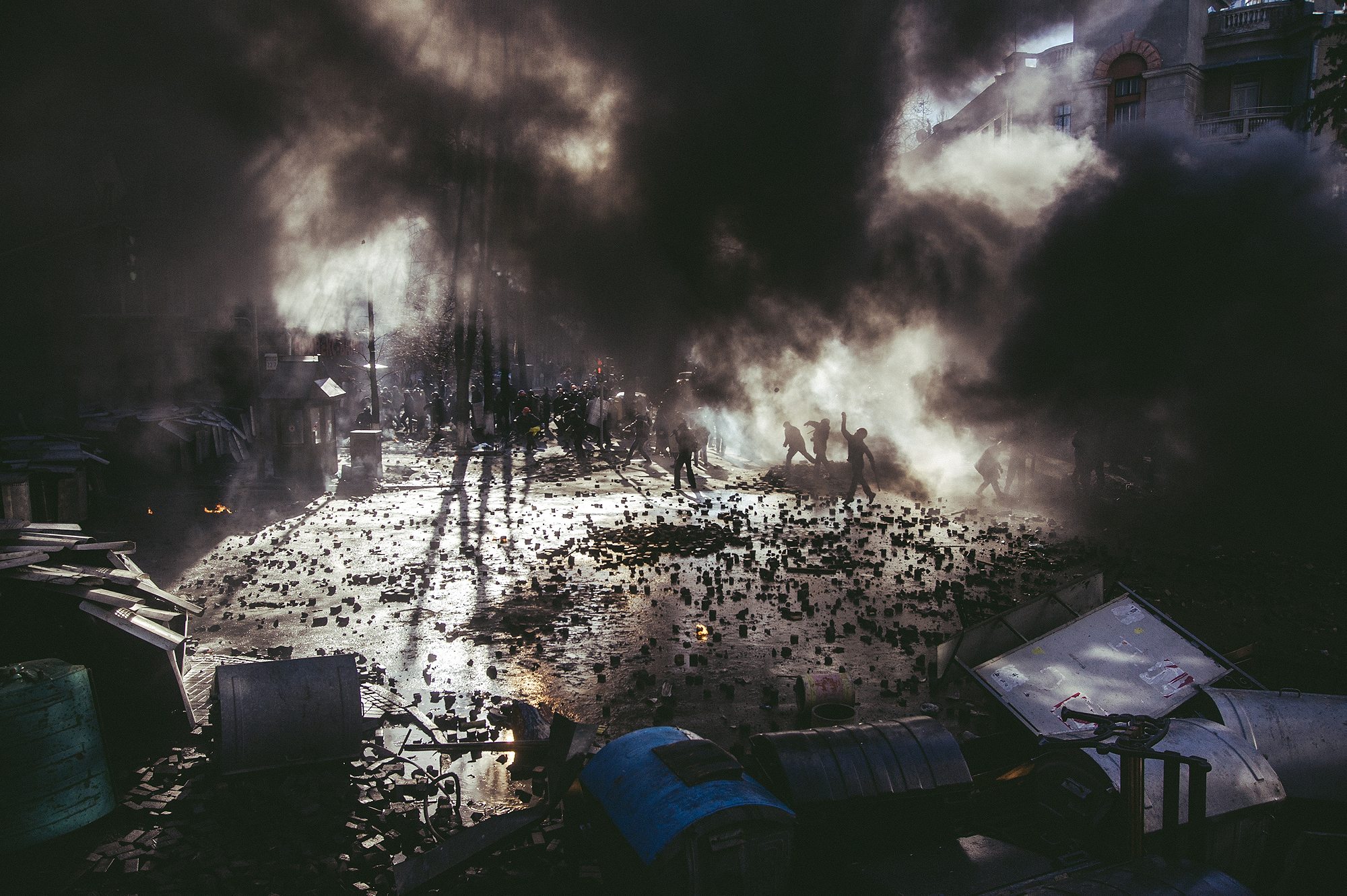
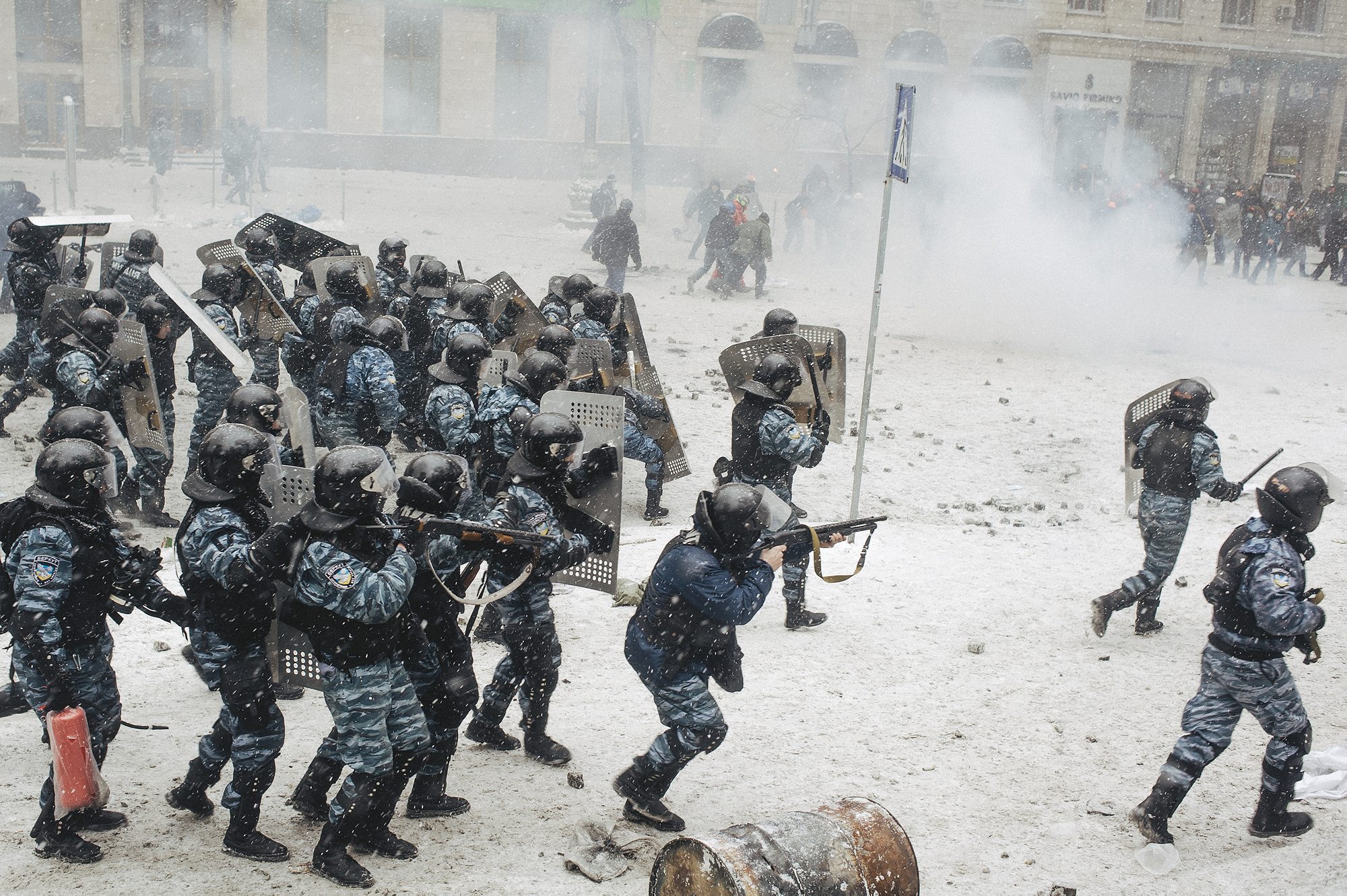
R&K: How was the work received? People must have been surprised at how different it looked.
Dondyuk: I worked mostly with international magazines that I trust. They contacted me. I was not looking for assignments, and often refused them if they didn’t coincide with my interests. So far, I haven’t had any offers to create an exhibition in Ukraine, but the book I’m working on will present 100 to 150 photos. It divides the Revolution in three different visual phases. I want people to see what I saw. I want to explain to people who live far from Ukraine why a completely peaceful demonstration turned into armageddon. Why people left everything, their work, their home, and came to the capital of Ukraine to fight for freedom. But you will know more after the book is ready, I don’t want to reveal all my secrets.

R&K: How has this project changed the way you practice photography?
Dondyuk: After this project, I started to feel more like a visual artist. I became interested in exhibitions and galleries rather than what was being published in the media, which I paid a lot of attention to before. Photography is my philosophy and my religion. I don’t believe in God, but photography helps me discover and understand this world. I believe that photography, just like any other type of art, is a container of emotions. And a documentary photographer only has a quick moment to work before everything ends.
You can help Maxim Dondyuk publish his book “Culture of the Confrontation” by donating to his kickstarter campaign.
